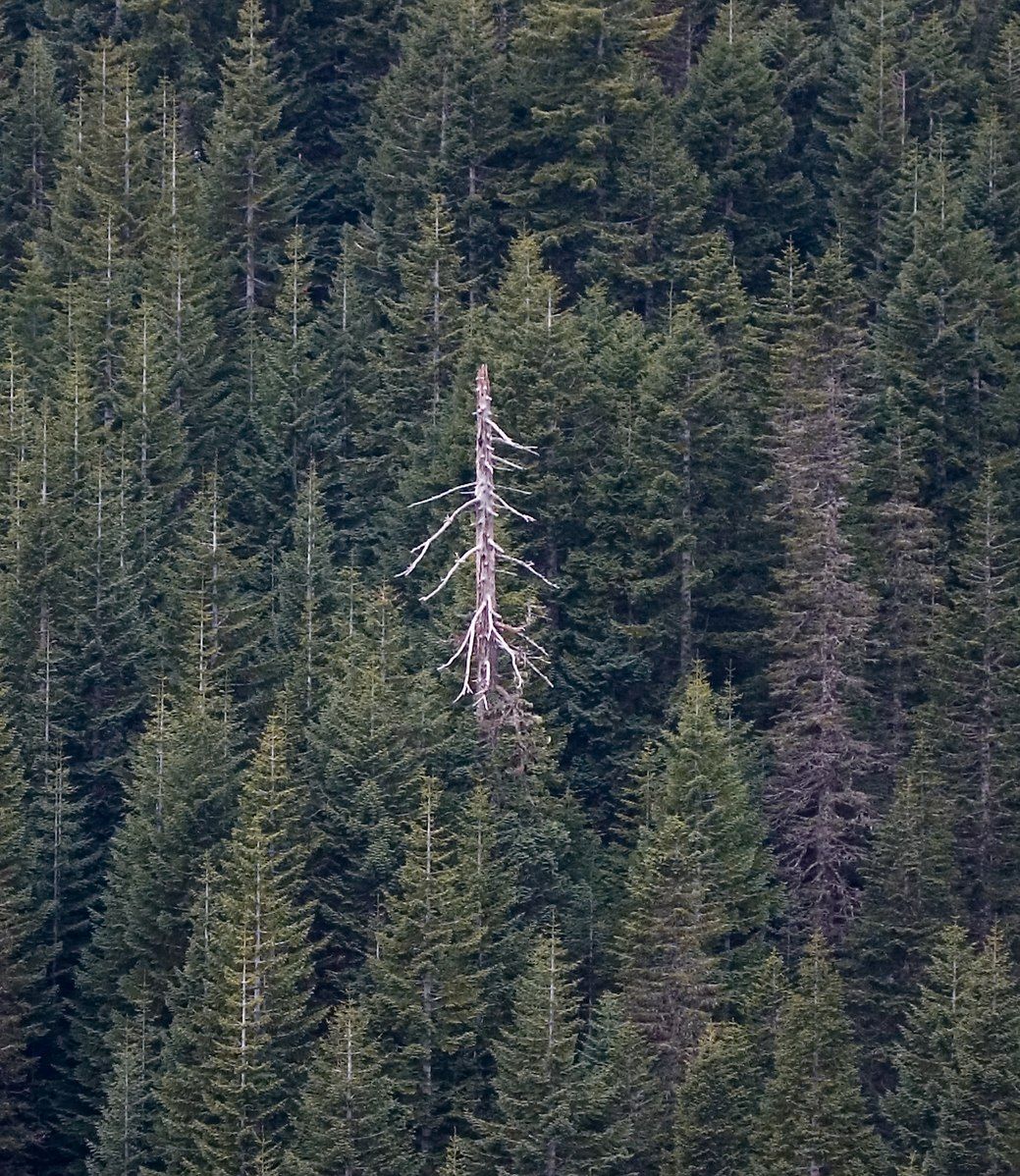
Over the course of millions of years of evolution, it is inevitable that some species will incorporate the life cycle of others into their own and use it to their advantage. We’ve already looked at how vultures use the dead as a food source, but this time, we’re focusing on a particular type of dead organism and its various uses: dead trees.
In ecology, a tree that has died but is still standing is referred to as a snag. Over the course of its ‘deathtime’, a snag will go through multiple stages as it continues to decompose. These are illustrated in the diagram below. Greenery is the first to go, followed by larger branches, and the eventual collapse of the entire structure. How long this takes depends on the size of the snag and how durable the wood is.
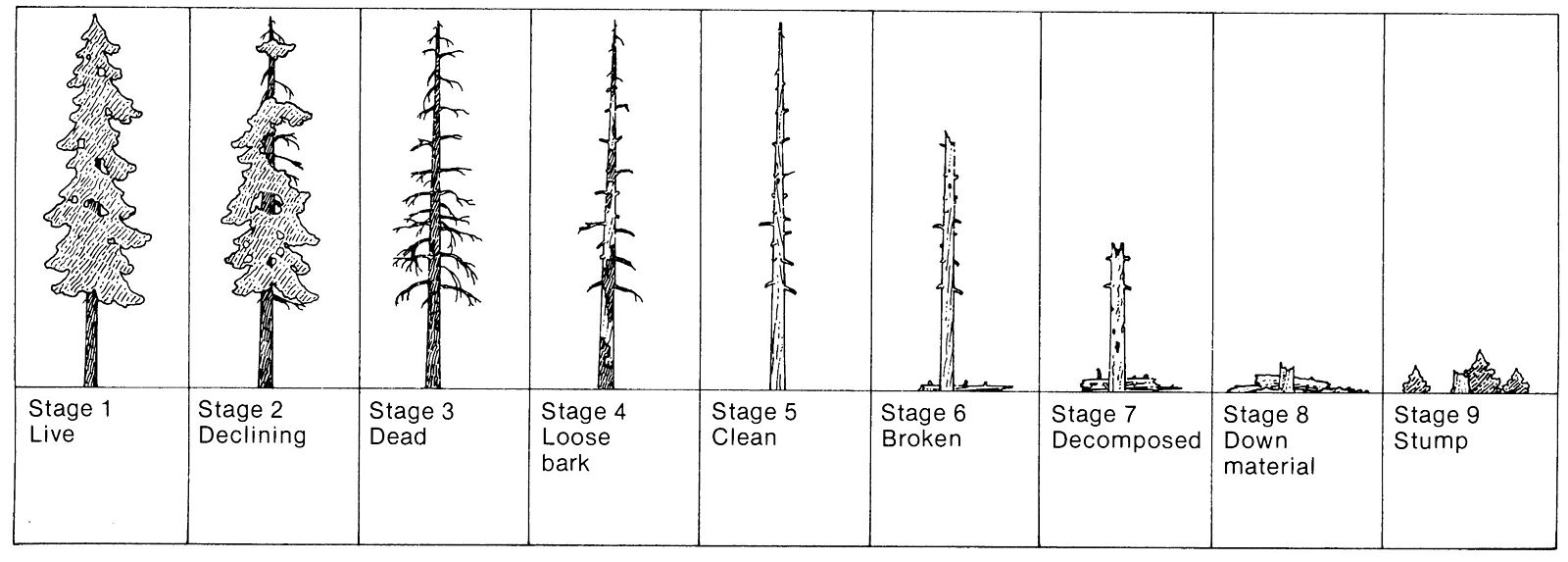
Snags are an excellent location for decomposing organisms such as bacteria and fungi to take up residence as they break down the dead plant tissue for food. Some invertebrates will also take advantage of this food source, including millipedes, worms, and various insects. Of course, this offers an opportunity for animals that eat those decomposers to get a meal too. One of the more iconic of such predators in South Florida is the pileated woodpecker, Dryocopus pileatus, with its distinctive red crest and powerful drilling beak.
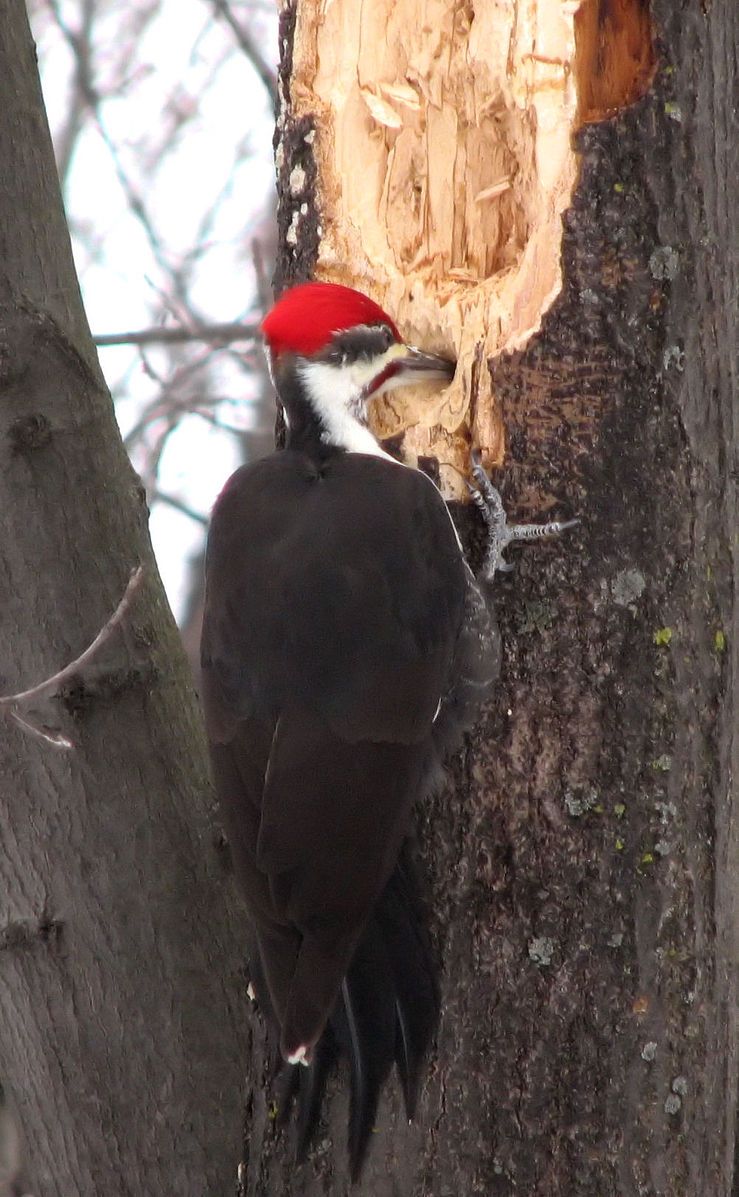
Woodpeckers don’t just use snags as a food source, either. They’re also vital for their reproduction, as many use them to create nest cavities. Multiple species do this, though some smaller ones like the downy woodpecker, Dryobates pubescens, will settle for a dead limb on a still living tree. In fact, I’ve seen a downy woodpecker nest cavity on a dead banyan tree limb in downtown Bonita Springs in recent years. I even noticed one the adults delivering food. It was too far away to get a good image, but this is a good approximation of what it looked like.
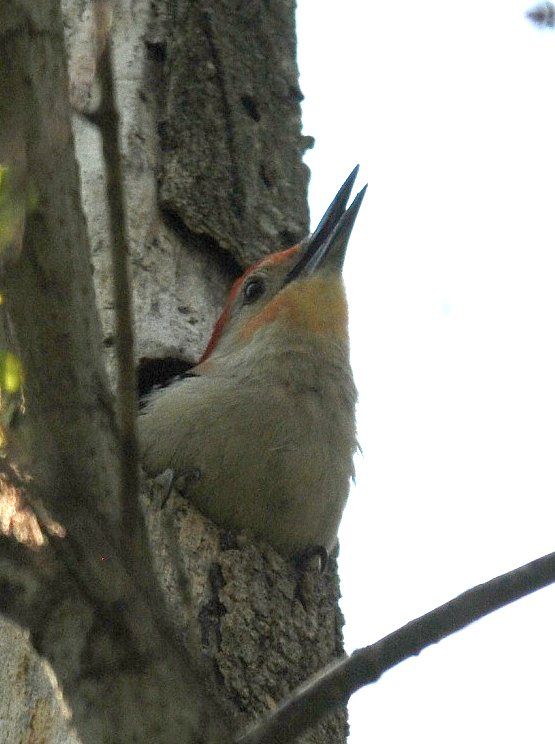
Even when the woodpeckers have finished with these nesting cavities, numerous other birds and mammals will use those holes for their own purposes, either for shelter or nesting.
The tops of snags also serve as excellent perching spots for numerous types of birds and mammals. It allows for a high vantage point and unobstructed sight lines. The species I personally see using snag perches the most here in South Florida are the osprey, Pandion haliaetus, and the anhinga, Anhinga anhinga, but those are just a couple of examples. Osprey also like to build their nests in snags (this affiliation for tall, bare structures is why ospreys are seen building nests on top of man-made structures like light poles and water channel markers, but bald eagles are not).
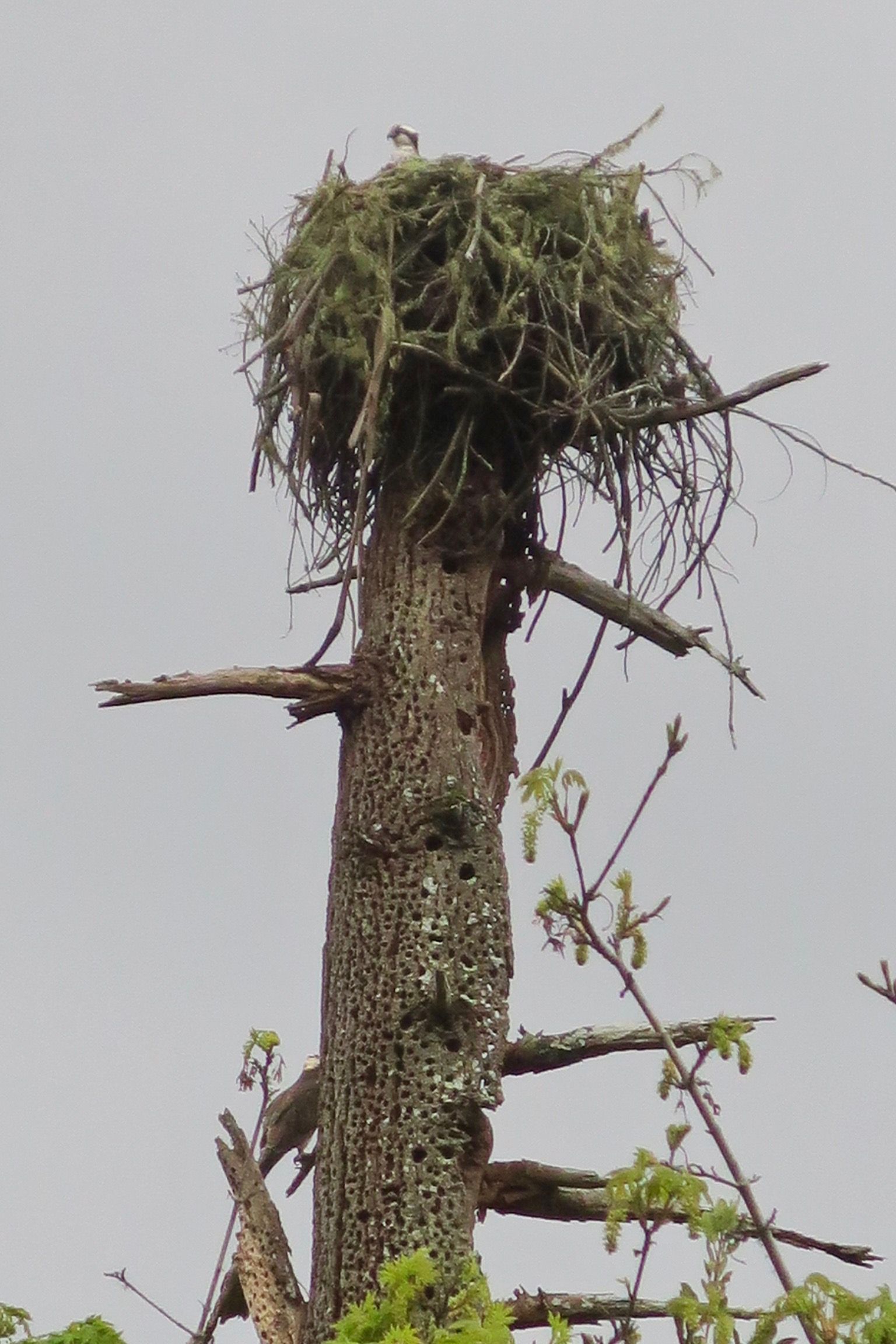
Overall, snags provide food and habitat for dozens of Florida species, so it’s important not to tear them all down.
What Can You Do?
What should I do about dead trees where I live?
- Don’t automatically remove trees when they die. There are lots of reasons why you might not want to keep a dead tree around, including the safety of people and property if it were to come down (we’re in a hurricane-prone area remember). However, if possible, try and leave snags to decay naturally for as long as possible. They’re an important aspect of forested ecosystems.
- Keep the dead wood around even after collapse. Whether it is because it has fully decomposed or because it needs to come down for safety, the material of a former snag (generally called a log), can still serve as important wildlife habitat. Consider keeping it around in an out-of-the-way corner.
- Keep your eye on snags. Use them as a landmark for wildlife observation. They’re a popular hang out spot and you can see some really neat species and behaviors if you pay attention to them.